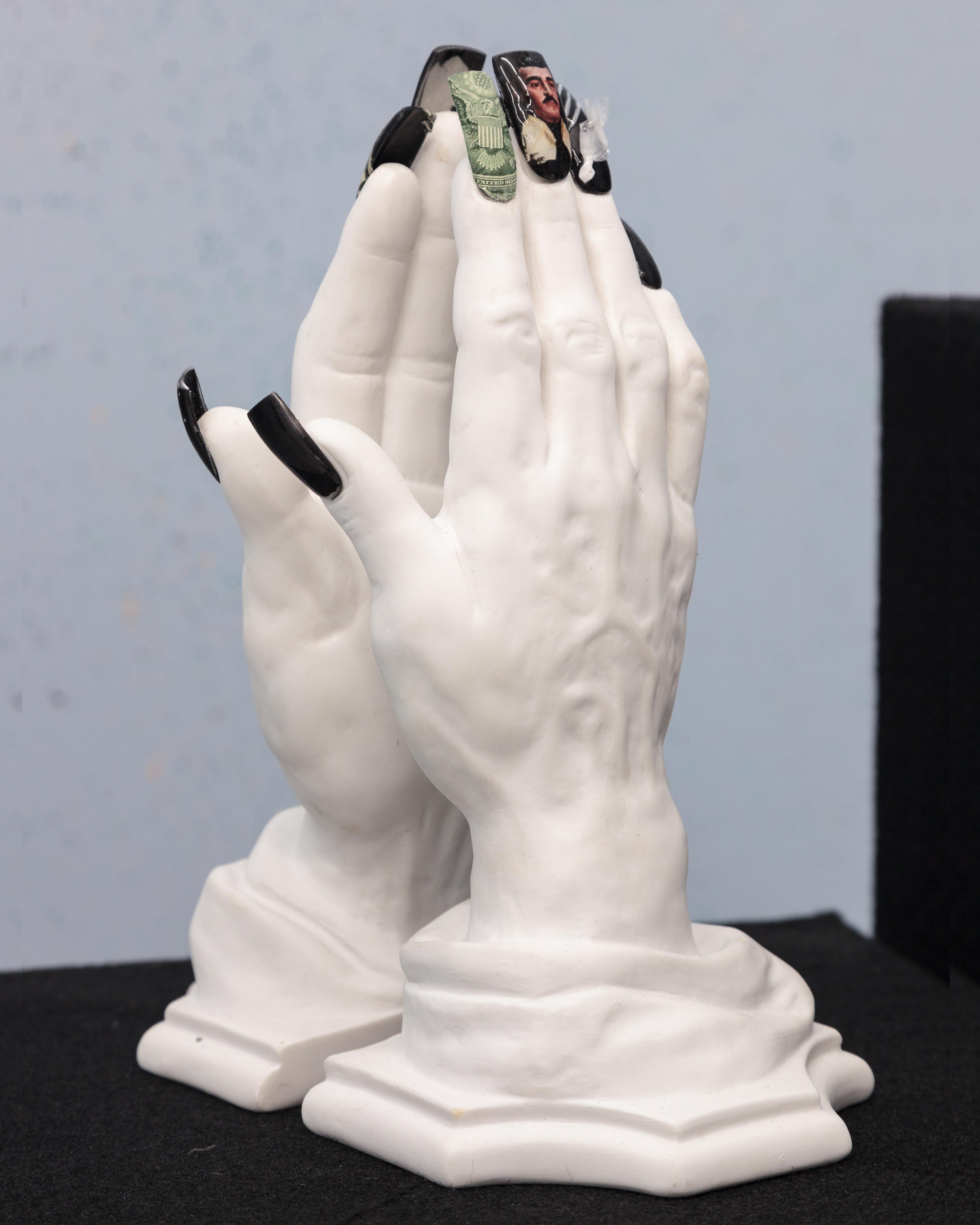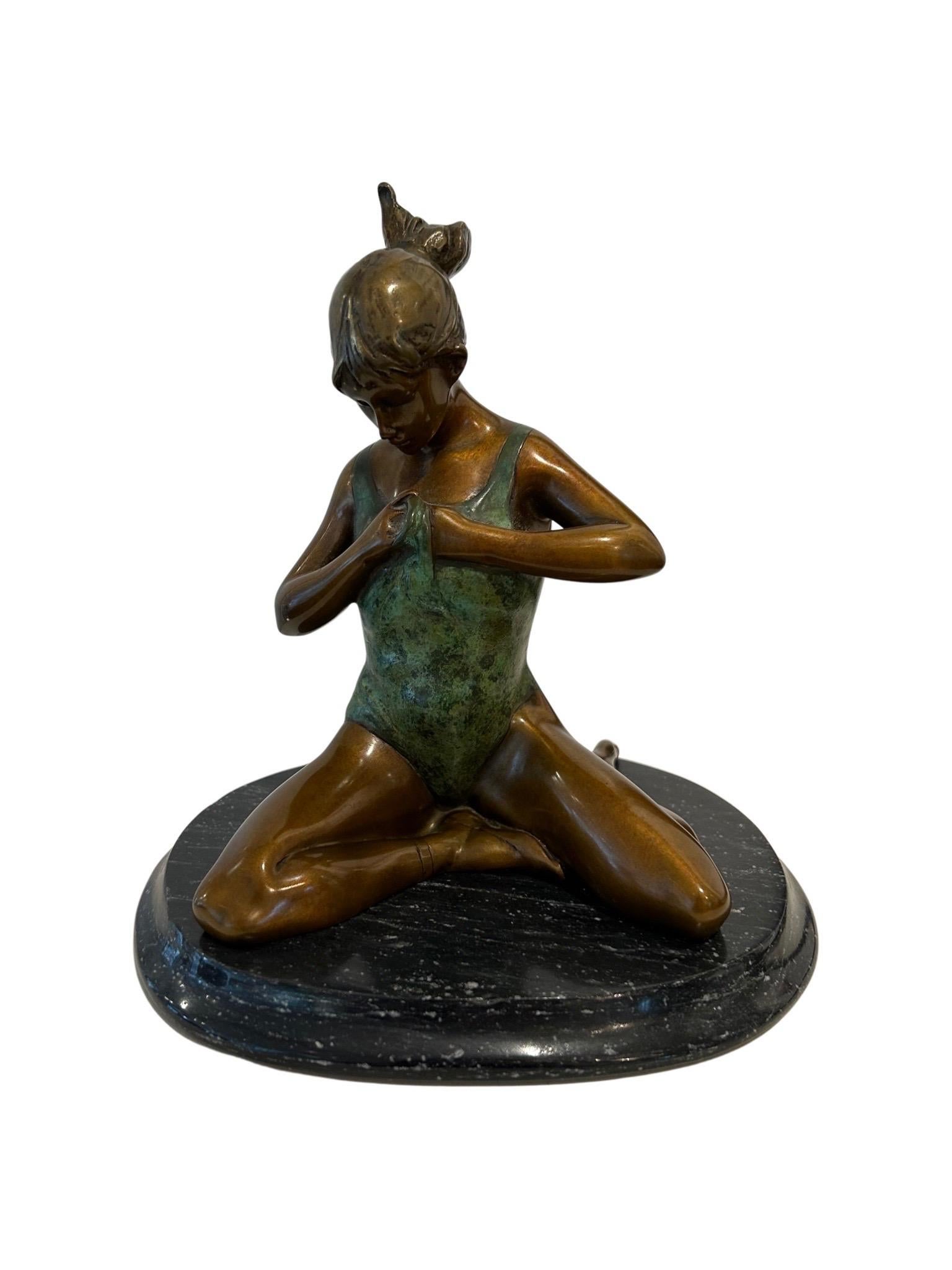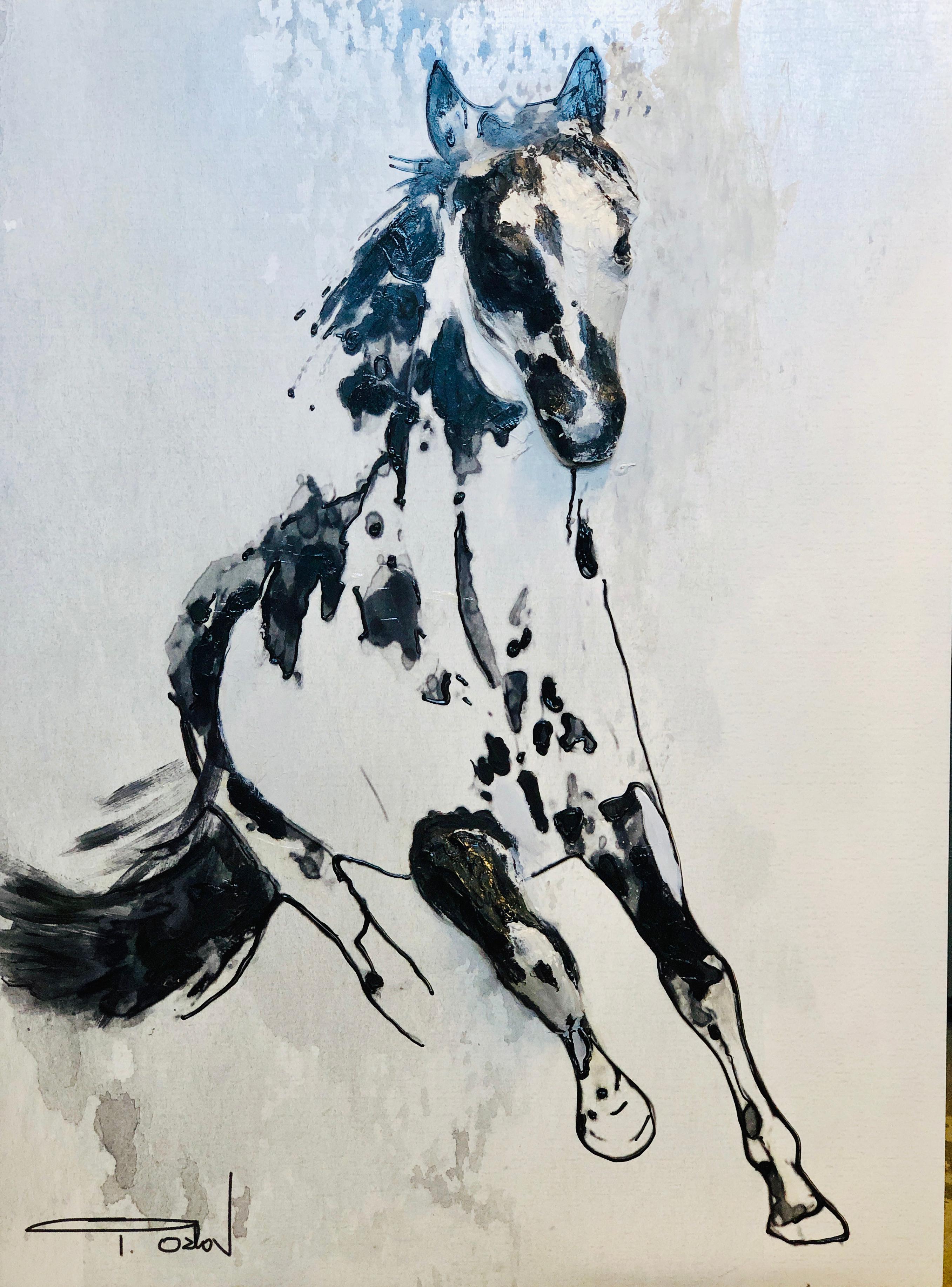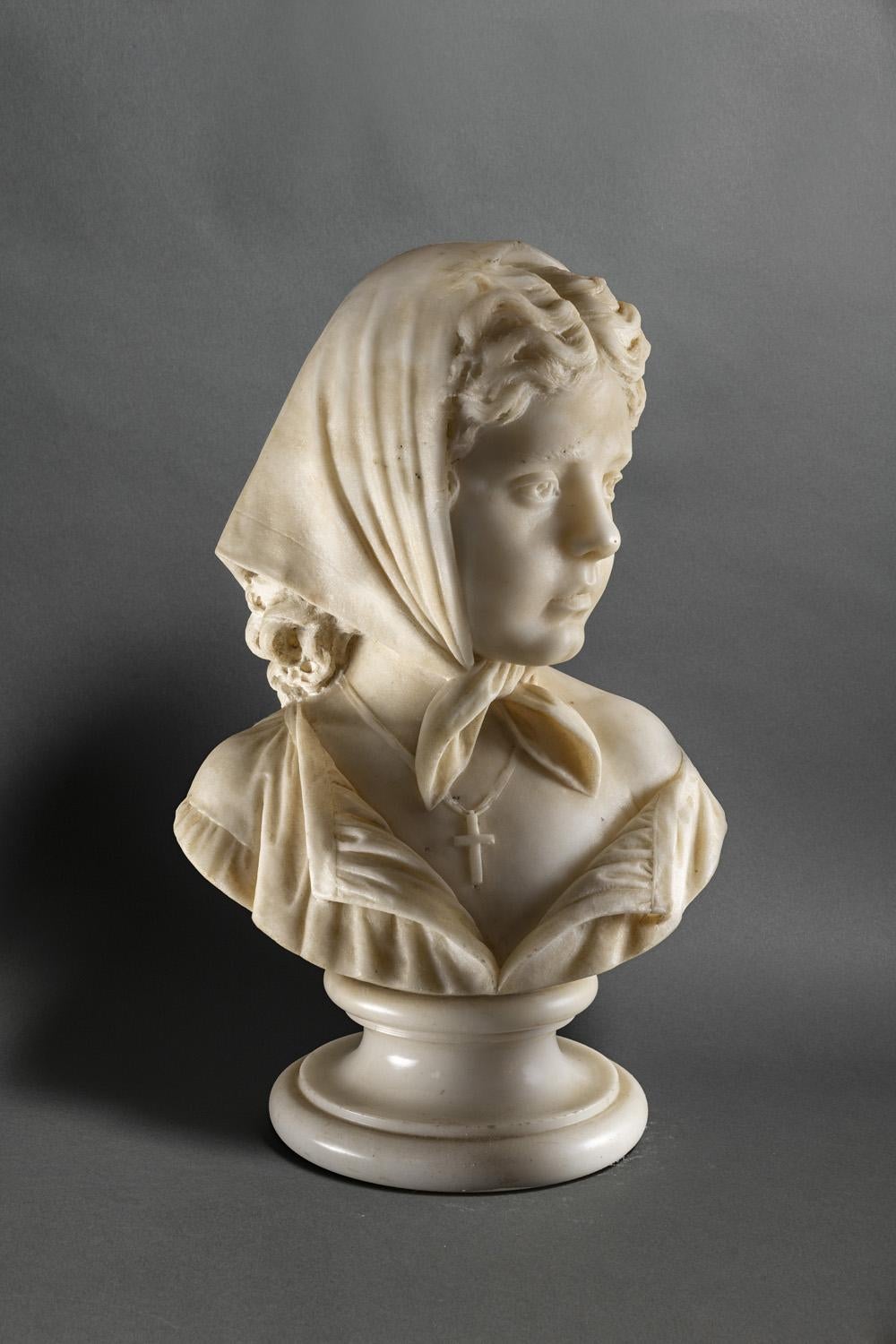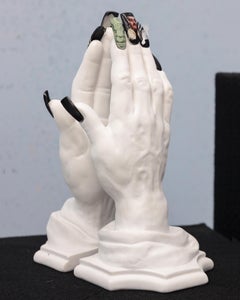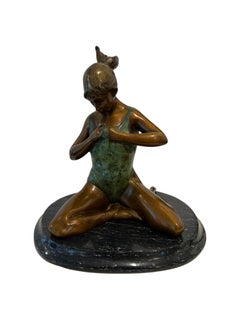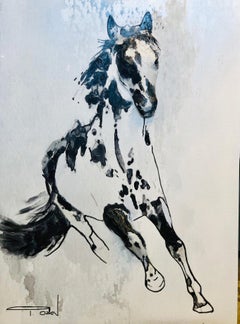Objekte ähnlich wie Chipmunk
Möchten Sie mehr Bilder oder Videos?
Zusätzliche Bilder oder Videos von dem*der Anbieter*in anfordern
1 von 8
Mark MorrisonChipmunkca. 1940
ca. 1940
Angaben zum Objekt
Mark Morrison (1895-1964)
Chipmunk, ca. 1940
Italian granite
5" by 4", height is 4 1/8"
Provenance: Estate of Mrs. Mark Morrison.
Born:
Kingfisher, OK
Education:
University of Missouri
John Flannagan, mentoring and private instruction ca. 1940
Art Students League with William Zorach and Jose de Creeft
Exhibited:
Sculpture Guild Annuals
Audubon Artists Annuals
National Academy of Design Annuals
Pennsylvania Academy Annuals
Metropolitan Museum Artists for Victory, 1942.
Newark Fine Arts Museum
Whitney Annuals
International Exhibition, Fairmount Park, Phila. 1950
Nebraska Fine Arts
Metropolitan Museum Exhibition, 1951
Boston Arts Festival
National Sculpture Society Annuals
Memberships:
Sculpture Guild, Inc.
Audubon Artists
Awards:
Ellen Prince Speyer Award, N.A. 1950
Architects League of New York, Avery Award, 1958, 1959.
Museum Collections:
Metropolitan Museum of Art
National Academy of Design
Pennsylvania Academy of Fine Arts
Whitney Museum of American Art.
Museum of Fine Arts, University of Arizona
Mark Morrison began his life as a sculptor while nearing his professional retirement. In the late 1930s and into the 1940s, he like many of the younger artists in New York City availed himself to the great many academies, museums, teachers and mentors it offered. He studied with John Flannagan before his death, and then Jose de Creeft and Williams Zorach at the Art Students League. Having an attraction and aptitude for the ideas of the direct carving movement and good thorough craft, he took advantage of the growing public interest in a new American sculpture, and worked quickly to become a contemporary of his teachers. Through the 1950s, he exhibited with them, sold, entered competitions, and won awards. He was a sculptor with a sure hand, a head for academy, patience, and promise. Morrison died suddenly in October 1964 having had just married his second wife earlier the same year. Mrs. Mark Morrison would offer a small piece for one more exhibition with a Sculptors Guild in 1965. The work was never seen again until 2025.
Morrison was born on New Year’s Day in 1895 in Kingfisher, Oklahoma, a small rural city not yet a part of the Union. The only child of a Protestant minister, and one of only 16 that in 1913 would graduate from his high school in Higginsville, Missouri. He studied agriculture at the University of Missouri, at some point leaving to enlist in the army. He would reach the rank of Major. After the war, he married his first wife, moved to New York and began work for Tidewater Oil. He worked with them until 1954, retiring as a vice president. At the time he was living at 8 W. 13th St., his studio already set up in a corner of the basement in his apartment building.
The earliest exhibition on record for a work by Morrison was the Artists for Victory show at the Metropolitan Museum, 1942. Earlier the same year, John Flanagan committed suicide. The death was a terrible blow. Flannagan had been a profound influence, sharing both technical instruction and philosophical guidance. The importance of their friendship during the 1930's cannot be overemphasized. Morrison is part of Flannagan's artistic legacy, his only known pupil during the mythical sculptor's short life. Born in the same year of 1895, both artists came to NYC from rural regions of the US: Oklahoma and North Dakota respectively. In contrast to Morrison's stable life, Flannagan was a deeply troubled, difficult, impatient and unpredictable man. To have considered mentoring Morrison, his teacher must have seen a kindred spirit and artist of extraordinary potential. In turn, Morrison must have been a sympathetic and patient pupil who recognized the importance of overlooking personal shortcomings for the invaluable instruction of an artistic genius.
Morrison did not show regularly for almost 10 years spending this time educating himself, exhibiting here and there. He continued his sculpture studies at the Art Student League with Zorach and de Creeft, spending most nights working stones in his studio. His mature style would become clearly realized by 1950, a synthesis of the naïve and the sophisticated, what Flanagan called "the image in the rock", and the polished fluid marbles of Zorach.
Black Swan was featured in the Sculptors Guild exhibition "In Time and Place" at the Museum of Natural History in March 1952. And exhibit pushing those points in their mission to assist the public to fuller appreciation of sculpture, and that the sculpture and the architecture of buildings may again be planned simultaneous and homogeneously. Morrison's swan was the centerpiece of the modern living room designed by Earnshaw, Inc. In the same hall of the museum one year earlier Morrison and other members of the group demonstrated process at work in seven makeshift studios. He would continue to exhibit in Guild annuals and Audubon Artist annuals. His sculpture "Gosling" was given a special honorable mention from the Architects League in the Avery Competition of 1958, runner up to Zorach. In 1959, when he showed "Grasshopper" he won outright.
He had moved his studio to a larger more private space a few blocks away in Greenwich Village. By 1964 his work had become larger in scale, his groupings more challenging and lively, more considerate of light and the nature of the stone itself. He had lost weight and for a man of nearly 70 years old was in very good health. His death was unexpected and unfortunate, probably of a stroke . His legacy has survived, largely unknown until now in a small ranch in upstate New York.
- Schöpfer*in:Mark Morrison (1895 - 1964, Amerikanisch)
- Entstehungsjahr:ca. 1940
- Maße:Höhe: 10,62 cm (4,18 in)Breite: 12,7 cm (5 in)Tiefe: 10,16 cm (4 in)
- Medium:
- Bewegung und Stil:
- Zeitalter:
- Zustand:
- Galeriestandort:Wilton Manors, FL
- Referenznummer:1stDibs: LU245216317862
Anbieterinformationen
4,9
Platin-Anbieter*in
Premium-Anbieter*innen mit einer Bewertung über 4,7 und 24 Stunden Reaktionszeit
Gründungsjahr 2007
1stDibs-Anbieter*in seit 2015
399 Verkäufe auf 1stDibs
Typische Antwortzeit: 2 Stunde
- VersandAngebot wird abgerufen …Versand von: Reading, PA
- Rückgabebedingungen
Einige Inhalte dieser Seite wurden automatisch übersetzt. Daher kann 1stDibs nicht die Richtigkeit der Übersetzungen garantieren. Englisch ist die Standardsprache dieser Website.
Authentizitätsgarantie
Im unwahrscheinlichen Fall eines Problems mit der Echtheit eines Objekts kontaktieren Sie uns bitte innerhalb von 1 Jahr für eine volle Rückerstattung. DetailsGeld-Zurück-Garantie
Wenn Ihr Objekt nicht der Beschreibung entspricht, beim Transport beschädigt wurde oder nicht ankommt, kontaktieren Sie uns bitte innerhalb von 7 Tagen für eine vollständige Rückerstattung. DetailsStornierung innerhalb von 24 Stunden
Sie können Ihren Kauf jederzeit innerhalb von 24 Stunden stornieren, ohne jegliche Gründe dafür angeben zu müssen.Geprüfte Anbieter*innen
Unsere Anbieter*innen unterliegen strengen Dienstleistungs- und Qualitätsstandards, wodurch wir die Seriosität unserer Angebote gewährleisten können.Preisgarantie
Wenn Sie feststellen, dass ein*e Anbieter*in dasselbe Objekt anderswo zu einem niedrigeren Preis anbietet, werden wir den Preis entsprechend anpassen.Zuverlässige weltweite Lieferung
Unsere erstklassigen Versandunternehmen bieten spezielle Versandoptionen weltweit, einschließlich individueller Lieferung.Mehr von diesem*dieser Anbieter*in
Alle anzeigenYoung Penguin
Mark Morrison (1895-1964)
Young Penguin, ca. 1950
Carved Tennessee Marble
8.5" x 7" by 3.5", height is 13 inches.
Provenance: Estate of Mrs. Mark Morrison.
Born:
Kingfisher, O...
Kategorie
Mitte des 20. Jahrhunderts, Realismus, Skulpturen
Materialien
Marmor
Green Frog
Mark Morrison (1895-1964)
Green Frog, ca. 1940
Carved green soapstone
6.5" wide, 5" deep, height is 3.25"
Provenance: Estate of Mrs. Mark Morrison.
Born:
Kingfisher, OK
Educ...
Kategorie
Mitte des 20. Jahrhunderts, Realismus, Skulpturen
Materialien
Stein
Schlafende Katze
Mark Morrison (1895-1964)
Schlafende Katze, ca. 1940
Gehauener Vermont-Granit
7,5" breit, 5" tief, Höhe: 7"
Provenienz: Nachlass von Mrs. Mark Morrison.
Geboren:
Kingfisher, O...
Kategorie
Mitte des 20. Jahrhunderts, Realismus, Skulpturen
Materialien
Granit
Cinnamon Bear
Mark Morrison (1895-1964)
Cinnamon Bear, ca. 1950
Carved red granite
11" wide, 11" deep, height (including wood base) is 15"
Provenance: Estate of Mrs. Mark Morrison.
Born:
...
Kategorie
Mitte des 20. Jahrhunderts, Realismus, Skulpturen
Materialien
Granit
Larva
Mark Morrison (1895-1964)
Larva, ca. 1940
Carved brown soapstone
9.5" long, 4" wide, 3.75" tall
Provenance: Estate of Mrs. Mark Morrison.
Born:
Kingfisher, OK
Education:
Un...
Kategorie
Mitte des 20. Jahrhunderts, Realismus, Skulpturen
Materialien
Stein
4.000 $
Affe
Mark Morrison (1895-1964)
Affe, ca. 1940
Geschnitzter Granit aus New Hampshire
8,5" x 5", Höhe: 16,5"
Provenienz: Nachlass von Mrs. Mark Morrison.
Geboren:
Kingfisher, OK
Bil...
Kategorie
Mitte des 20. Jahrhunderts, Realismus, Skulpturen
Materialien
Granit
8.000 $
Das könnte Ihnen auch gefallen
Pra Praying Nail Tips Malverde
Eine Arbeit aus der Serie Nail Tips, in der der Künstler über die politische Situation in den USA spricht
Kategorie
2010er, Realismus, Figurative Skulpturen
Materialien
Marmor
„Sitzende Ballerina“ Figur aus Bronzeguss auf Granitsockel
Bronzeskulptur einer sich ausruhenden Ballerina. Ihr Trikot ist in einem schönen Grünton patiniert, der mit der Bronzefarbe der übrigen Figur kontrastiert. An ihren Füßen sind Ballet...
Kategorie
21. Jahrhundert und zeitgenössisch, Realismus, Figurative Skulpturen
Materialien
Granit, Bronze
500 $ Angebotspreis
50 % Rabatt
Classic Bronzeguss-Skulptur eines Pferdes
Eine realistische Skulptur eines stehenden Pferdes aus Bronze auf einem Sockel aus schwarzem Marmor. Der Bronzesockel ist in einem anderen Ton patiniert, um den Boden zu imitieren.
...
Kategorie
21. Jahrhundert und zeitgenössisch, Realismus, Skulpturen
Materialien
Marmor, Bronze
1.650 $ Angebotspreis
25 % Rabatt
Wild reitendes Pferd Dreidimensionales Gemälde auf Holz 40 H x 30 B Zoll
Von Irena Orlov
Wildes laufendes Pferd Dreidimensionale Malerei auf Holz 40H X 30" W
2019 in Los Angeles
Gemeinsames Kunstwerk - Irena Orlov-Zeev Orlov
SPEZIFIKATIONEN:
Kombiniert Malerei und Bil...
Kategorie
2010er, Realismus, Figurative Skulpturen
Materialien
Alabaster
Wild Laufpferd Dreidimensionale Gemälde-Skulptur auf Holz 40HX30 Zoll B
Von Irena Orlov
Wildes laufendes Pferd Dreidimensionale Malerei auf Holz 40H X 30" W
2019 in Los Angeles
Gemeinsames Kunstwerk - Irena Orlov-Zeev Orlov
SPEZIFIKATIONEN:
Kombiniert Malerei und Bil...
Kategorie
2010er, Realismus, Figurative Skulpturen
Materialien
Alabaster
7.800 $ Angebotspreis
22 % Rabatt
Scultura in marmo italiana ritratto di fanciulla religiosa del XIX secolo
Die marmorne Büste, datiert auf 1890, stammt aus ihrer Erwachsenenzeit, genauer gesagt aus dem letzten Jahr ihres Lebens, als sie sehr reich war und ein sehr produktives Studio in Fl...
Kategorie
1890er, Realismus, Figurative Skulpturen
Materialien
Marmor
